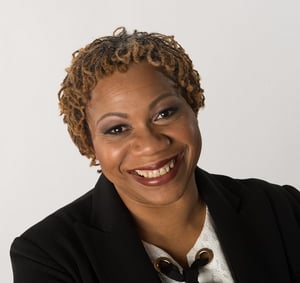 Diverse workplaces call for equally diverse wellness programs.
Diverse workplaces call for equally diverse wellness programs.
Whether it’s due to culture, socio-economic opportunities, or other factors, employees have differing perspectives and knowledge when it comes to health and wellness.
In order to be successful, wellness committees must cater to that, experts say.
To create employee well-being through corporate wellness programs, it’s essential for wellness committees to understand that cookie-cutter programs don’t work for different demographics. That includes making employees from all walks of life feel like they are considered and included.
It means being inclusive by asking and incorporating feedback from all interested employees. That also starts with a diverse wellness committee and providing appropriate training to those who spearhead such company health campaigns.
Curious about how to do it?
Below, you’ll find insight from a clinical mental health counselor and a global wellness thought leader.
Both weigh in on the importance of multicultural wellness in a diverse workplace. They also share tips on approaching it in a way that’s effective, sensitive, and smart.
 Dr. Tasha Holland-Kornegay
Dr. Tasha Holland-Kornegay
Tasha Holland-Kornegay is a licensed clinical mental health counselor, wife, and mother of two boys. She’s also the founder of WIRL (Wellness In Real Life), a well tech platform used to decrease healthcare provider burnout and reduce stress by providing them access to the best deals in wellness, fitness, and self-care.
“I created a platform that I actually needed,” says Dr. Holland-Kornegay. “Having wrestled with a formidable case of burnout myself, I knew that the high-stress environment that healthcare professionals work in could really take a toll on our mental health. In the throes of my own burnout episode, WIRL was the light at the end of the tunnel — it was a way for me to help myself and my colleagues.”
Below, Dr. Holland-Kornegay shares her thoughts on how companies can promote wellness in a way that reflects the needs of all employees.
What should employee wellness look like for companies with a diverse workplace?
The key to achieving employee wellness is focusing on the holistic needs of every individual that makes up your team. That doesn’t just mean buying standing desks and filling the break room with healthy foods.
While there are plenty of products and services that can improve employee wellness, true wellness means setting up a comfortable and constructive work environment for everyone.
Beyond equipping your office with the things your employees need to be at their best, wellness also requires making sure that your company culture is inclusive and constructive, so employees from all walks of life feel comfortable.
How can companies make sure health issues that are demographic-specific are discussed and addressed in the workplace? How do workplaces account for covering the multitude of health concerns for a variety of groups? (For example, African Americans are 2x more likely to die from heart disease than Caucasians, according to the CDC.)
Because companies must hire workers and provide adequate healthcare options to keep those workers safe, they should recognize that different populations are statistically more affected by different health concerns.
Addressing these health disparities is necessary to equally promote wellness to a diverse workforce. Accomplishing such care will require a diverse healthcare workforce with proper training to make culturally competent health decisions for the populations within the company.
What are the key points to think about when covering multicultural awareness in wellness campaigns and at-work events?
Multicultural awareness efforts should be constructed by a diverse team that understands the gravity of the subject, and they should convey the benefits that a diverse workforce brings to a company – without simplifying or minimizing the concept of diversity.
Promoting practices such as self-awareness and active listening can help, but nothing is more powerful than leading by example. After all, multicultural awareness isn’t a checkbox – it’s a free-flowing state of company culture. All hands need to be on deck to create and maintain it.
How can companies approach these topics positively and appropriately?
In addition to the steps above, it’s important to roll out multicultural awareness efforts in a manner that doesn’t seem condescending or pedantic. These topics are highly complex and important, and they shouldn’t be reduced to bullet points or quick-scripted meetings. Exploring these topics while encouraging open discussion with a diverse group of workers could help liven up the discussion and have a stronger impact on everyone involved.
What easy-to-implement starting points do you have for companies looking to improve their approach to multicultural wellness in the workplace?
Hosting guided conversations with a diverse group of workers is a great way to encourage multicultural employee wellness. However, it should be an open discussion in a setting that doesn’t tokenize or “other” those involved, and you should make sure everyone involved has volunteered their own voice.
About Dr. Tasha Holland-Kornegay
Dr. Holland-Kornegay is the founder of Wellness in Real Life and CEO of Our Treatment Center, a counseling practice in Raleigh-Durham. Over the years, Dr. Holland-Kornegay has held the positions of School Based Counselor for Wake County Public Schools, (NC), Executive Director for Oxford Manor Achievement School (Durham Public Housing-nonprofit); and Program Coordinator for Communities in Schools (nonprofit). She also spent time working with inner city youth as Program Manager for the nonprofit Covenant House of New York City.
 Joyce Odidison
Joyce Odidison
Joyce Odidison is the CEO and founder of Interpersonal Wellness Service Inc. and the founder of Global Workplace Wellness Summit. As a conflict analyst and corporate trainer, her personal mission is to provide people at work with a roadmap to work and live well.
“This sounds so simple yet it isn’t,” she says. “As a professional who is from a minority background, I am aware of the racial divide that exists.”
Odidison says she’s discovered that there are nine life dimensions everyone needs in order to live their healthiest lives. Each year, she teaches these key wellness competencies through the Global Workplace Wellness Summit.
“I use the Global Workplace Wellness Summit as a platform to share the wellness competency mindset teaching with organizations through my work and that of the many professionals that are on a similar path,” she says. “Each year, we host a virtual or in-person live summit to create more opportunities to make wellness at work more inclusive and accessible to all employees.”
Below, Odidison shares her thoughts on how companies can promote wellness in a way that best reflects all employees’ needs.
What should employee wellness look like for companies with a diverse workplace?
I think wellness should be part of the DNA of the organization. I maintain that every organization should reflect the nine wellness competencies as part of their overall workplace wellness program to ensure that the diverse needs of employees are met.
This year, the Global Workplace Wellness Summit will be hosting a roundtable to help organizations remove barriers to implementing the wellness competencies into their organizational culture. The nine wellness competencies provide a framework to ensure that all employees benefit from the wellness program.
The wellness competencies include integrity, responsible communication, self-mastery, engagement, capacity building, interdependence, innovation, vibrancy, and resilience. This concept makes up the powerful wellness competency mindset teaching aimed to bring humanity back to the workplace.
How can companies make sure health issues that are demographic-specific are discussed and addressed in the workplace? How do workplaces account for covering the multitude of health concerns for a variety of groups? (For example, African Americans are 2x more likely to die from heart disease than Caucasians, according to the CDC.)
It is impossible for a company to run the lives of each of its employees and take on responsibility for their health and lifestyle choices. The employees are not slaves to the organizations. The responsibility of the organization is to ensure that employees have had the awareness and access to the correct health information and resources.
Organizations should take a more direct role in wellness education. My company runs an entire institute offering wellness education teaching and coaching for public and private sector employees. I see it every day and employees tell me how much they benefit having access to the wellness mindset teaching. It is hard for employees to change their behavior without the time and energy being invested in to help them develop the key wellness competencies to live and work well.
The key to changing behavior for employees is to provide them with information they can easily digest, from someone who demonstrates compassion and understanding for their experiences. The information should educate them on their risk factors and provide them with concrete options and solutions or point them in the direction of the support they need.
What are the key points to think about when covering multicultural awareness in wellness campaigns and at-work events?
Organizations need to stop offering their wellness programs like boutique-style options that seem to attract the elite. Wellness should be built into the infrastructure of the workplace so no one is left behind.
Choices and offerings are common to employees of certain socio-economic status. Others are used to being given an allotment, thus being told to volunteer for the wellness program can be interpreted as them not belonging or really expected to participate. Many view wellness programs at work as just another way to be controlled or labeled. Some individuals may even feel they are exclusive.
How can companies approach these topics positively and appropriately?
Companies should stop putting wellness in a box.
Firstly, you cannot be offering a wellness program at lunchtime when employees are feeling harassed, excluded, and mistreated. Healthy organizations should have a zero policy on discrimination. They should ensure that their leadership is representative of their workforce and their clientele. Leaders should be trained to lead well.
A number of years ago, we revamped our leadership training and created the Relational Well-being Leadership program that helps leaders transform the way they engage and relate to their employees to promote well-being at work. Wellness should be part of the corporate structure that can be easily seen in the way people interact with each other. If your employees are unhappy, feel unsafe, threatened, or are fearful at work, then that will create negative energy and low social vibrations for your organization. No one wins when anyone is unwell.
What easy-to-implement starting points do you have for companies looking to improve upon how they address multicultural wellness in the workplace?
Wellness is essential for the good health of a business, the economy, and society. This was aptly demonstrated with the coronavirus pandemic. People of all races and cultures were threatened at the same level. The deciding factor was socioeconomics. The easiest way to ensure that your wellness program meets the needs of your diverse workforce is to ensure that it is something that your employees can see.
Many employees tell us that there is a wellness program but it’s only the people who jog, the fitness folks, or the yogi folks who take part. This is not a wellness program; it is an activity. A program should be multifaceted, multi-dimensional, and offers a visual roadmap that even the simplest employee can assess how the program relates to them:
- What does it look like?
- Do your employees see themselves in it?
- Can they easily use it to assess their behavior and actions?
- Does it give them immediate feedback or awareness that they need to be doing something else or different?
Many of our clients use the wellness improvement system that uses a simple roadmap to give employees a quick visual of all the dimensions of wellness and it invites them to ask how well they are in the various areas.
Anything else you feel is relevant or noteworthy you'd like to share?
It is important to remember that employees are also busy with a lot going on in their personal lives. They may also have cultural norms and traditions that are important for them to maintain. While we want to be inclusive, we also want to ensure that choices are respected. Companies need to broaden their concept of wellness to more than the physical dimension.
In the Wellness Competency Mindset Teaching, we explore nine dimensions of wellness. They are spiritual, social, emotional, occupational, intellectual, environmental, financial, physical, and interpersonal wellness dimensions.
We teach a dynamic wellness improvement system where each dimension is impacted by the level of wellness in other dimensions. As a system, what happens in one area will impact the wellness levels in all the other dimensions. When organizations adapt the systems approach to wellness, then their programs will become inclusive, diversified, and multicultural.
About Joyce Odidison
Joyce Odidison, MA, PCC, CTDP is an author, coach, speaker, and thought leader of the Wellness Competency Mindset Teaching and coaching concept to promote emotional and mental resilience. She is a conflict analyst, president of Interpersonal Wellness Services Inc., and a corporate wellness trainer for 24 years, helping people at work stay well and resilient through difficult changes and challenging conflicts.
Joyce has trained and certified hundreds of coaches around the globe through her ICF approved wellness coach training program. Joyce and her team provide workplace wellness and leadership coach training to the public and private sectors, using her signature approach. She is also the host of the annual Global Workplace Wellness Summit and the What’s Happening at Work podcast.



